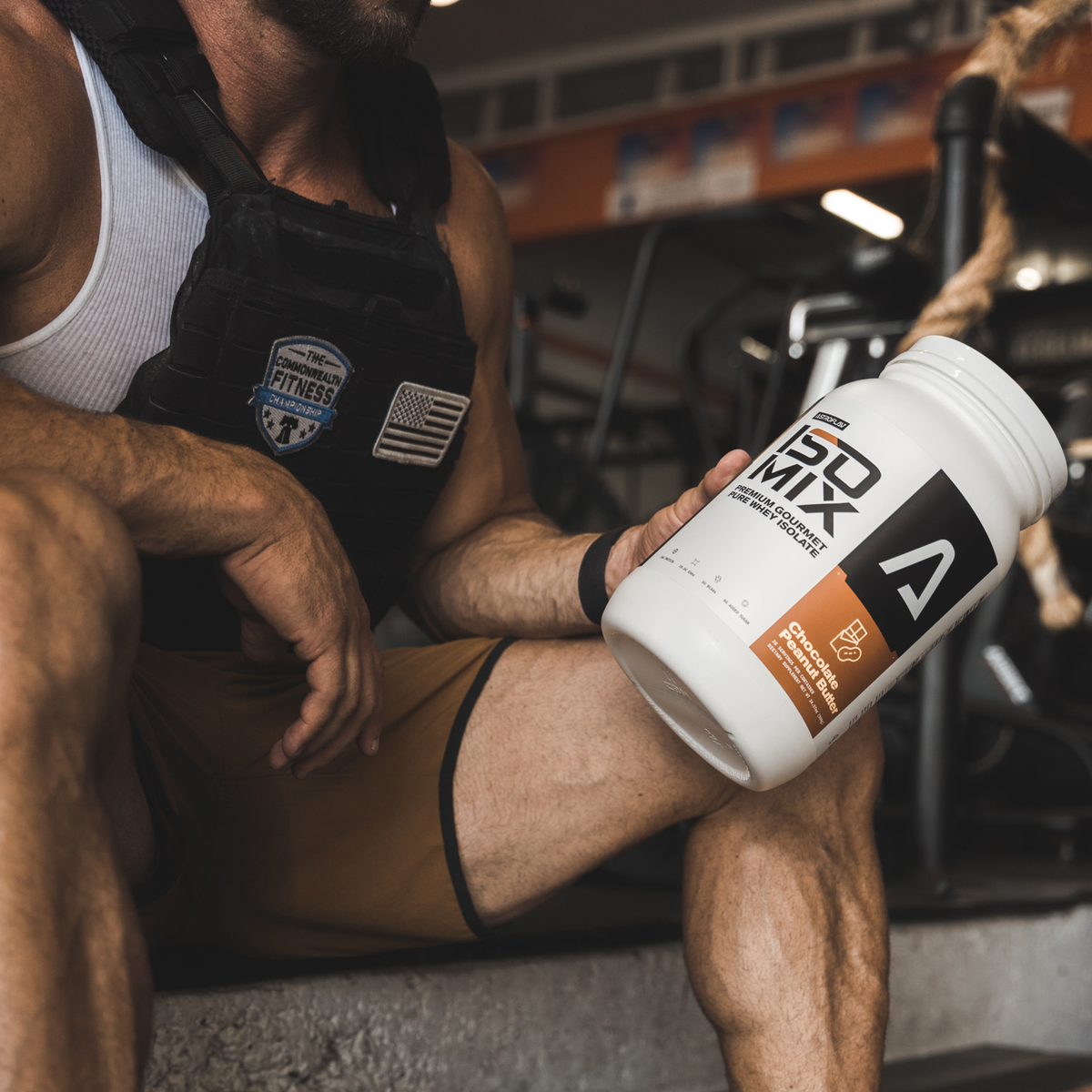
What Is High Performance Training?
Despite being an increasingly popular topic in the world of fitness, high-performance or "hybrid" training has gotten everyone questioning what type of training this is. This style of training combines endurance and strength training to create a powerful blend to reach peak athletic performance. Designed for those who want to excel across multiple physical domains, this approach combines the stamina of endurance athletes with the power of strength enthusiasts. At AstroFlav, we believe in pushing limits, and high-performance training is all about unlocking your full potential by integrating the best of both worlds—building muscle, boosting endurance, and achieving peak physical condition. Keep scrolling to learn more!
High Performance Training:
High-performance training is a specialized approach that integrates both strength and endurance exercise to optimize overall athletic performance. This method challenges the body to adapt to various physical demands, enhancing power, speed, and stamina simultaneously.
By focusing on a balanced blend of weightlifting and cardiovascular exercises, high-performance training aims to push athletes past their limits, ensuring they develop and excel in multiple areas of fitness. This comprehensive training style is ideal for those looking to build a well-rounded physique capable of handling intense physical challenges across diverse activities.
Incorporating high-performance training into your fitness routine not only boosts physical capabilities but also enhances mental toughness. How so?
This training style requires consistent focus, discipline, and determination, which helps in building mental toughness. As athletes progress, they often find themselves breaking through personal barriers and achieving goals they once thought were out of reach.
Additionally, high-performance training promotes functional fitness, ensuring that the strength and endurance gained translate effectively into real-world tasks and sports.
What Types of Exercise Is High Performance?
1. High-Intensity Interval Training
2. Running & Sprints
3. Plyometric Training
4. Jump Rope
5. CrossFit Style Training
6. TRX Training
7. Resistance Training
Benefits of High Performance Training:
By combining strength training with endurance workouts, this approach stimulates multiple physiological systems simultaneously, leading to comprehensive improvements in overall fitness. The varied intensities and types of exercises involved boost cardiovascular health, increase muscular strength, and enhance flexibility and agility.
High-performance training builds muscle and strength by integrating targeted resistance exercises with high-intensity workouts, promoting muscle growth and enhancing overall physical power. A recent study found that after six weeks of combined strength and endurance training, participants experienced a reduction in body fat and an increase in muscle mass.
Due to its blend of rigorous strength and cardio workouts that elevate metabolism and enhance overall fat-burning efficiency, high-performance training can significantly improve body composition by boosting muscle mass and reducing body fat.
Training at different intensities, loads, and distances offers athletes several advantages, including improved physical performance, increased resilience, and enhanced injury prevention.
By incorporating various modalities, such as strength training, cardio, and functional movements, this approach ensures that all aspects of physical fitness are addressed. This diversity not only prevents plateaus and keeps workouts engaging but also enhances overall efficiency, as the body is continually challenged and adapts to new stimuli.
4 Steps To Building A High Performance Training Program
1. Set Your Goals
2. Plan Your Training Frequency
3. Execute Your Training
4. Prioritize Recovery
1. Set Your Goals
Setting clear and specific goals is crucial when building a high-performance training program because it provides direction and motivation throughout the training process. By identifying what you want to achieve—whether it's increasing strength, improving endurance, or enhancing overall athletic performance—you create a roadmap that guides your workouts and helps measure progress.
Well-defined goals also help in maintaining focus and discipline, ensuring that each training session is aligned with your specific goals. This strategic approach maximizes the effectiveness of your training, enabling you to achieve your desired outcomes more efficiently.
2. Plan Your Training Frequency
Planning your training frequency is essential for optimizing results in a high-performance training program. Determining how often you train allows you to balance intensity with recovery, ensuring your body has enough time to adapt and grow stronger.
Regularly scheduled workouts keep you on track with your goals, while also preventing overtraining, which can lead to burnout or injury. By strategically planning your training frequency, you can maintain consistency and steadily progress towards your performance objectives.
3. Execute Your Training
When training at high intensity, hard work and determination is key to achieving the best results in a high-performance program. Pushing yourself during each session not only challenges your physical limits but also builds mental resilience.
Training with purpose and focus ensures that every workout counts, driving you closer to your goals and making you a stronger, more capable athlete. The commitment to consistently train at a high level will lead to better performance outcomes and help you reach your full athletic potential.
4. Prioritize Recovery
Prioritizing recovery is just as important as the intensity of your training when striving for high performance. Recovery allows your muscles to repair, grow stronger, and adapt to the demands of your workouts. By giving your body the time it needs to heal, you reduce the risk of injury and prevent burnout, ensuring that you can continue to train hard and progress.
Incorporating rest days, proper nutrition, and recovery techniques into your routine is essential for sustaining long-term performance and achieving your athletic goals.
Tips For Starting:
When you're just getting into high performance training, it can feel overwhelming due to its comprehensive and demanding nature, but with a strategic approach, you can navigate this journey effectively.
Begin by creating a solid plan that integrates a mix of strength, endurance, and functional exercises tailored to your fitness level and objectives.
Setting clear, achievable goals will help you stay focused and motivated throughout your training. It’s essential to execute your plan with consistency and determination, gradually increasing the intensity and complexity of your workouts as you progress.
Remember, while this style of training may seem challenging, breaking it down into manageable steps and celebrating small victories will build your confidence and pave the way for successful and rewarding results.

The Bottom Line:
High-performance training is a dynamic and multifaceted approach designed to enhance overall athleticism by integrating strength, endurance, and functional exercises. By setting clear goals, planning diverse and efficient workouts, and committing to consistent, intense training, athletes can achieve significant improvements in physical performance, body composition, and mental resilience. While starting with hybrid training may initially seem daunting, breaking it into manageable steps and focusing on gradual progress can make the process rewarding and effective. Prioritizing recovery and adapting your routine based on personal needs further supports long-term success and helps you reach your peak performance.
AstroFlav Endurance Stack
RESOURCES
-
Force Fit. (2023, October 2). Why hybrid training is the fitness style of the future. Force Fit. https://force-fit.co.uk/blogs/news/why-hybrid-training-is-the-fitness-style-of-the-future?srsltid=AfmBOooKI4_IlHFJM2l_-1koiKlAlRUkq4J1TCKWSKtCsRdxosqaHlpu
-
Mooren, F. C., & Krüger, K. (2021). The influence of training intensity on the effectiveness of high-performance training. Journal of Sport and Health Science, 10(3), 347-354. https://doi.org/10.1016/j.jshs.2020.11.006






